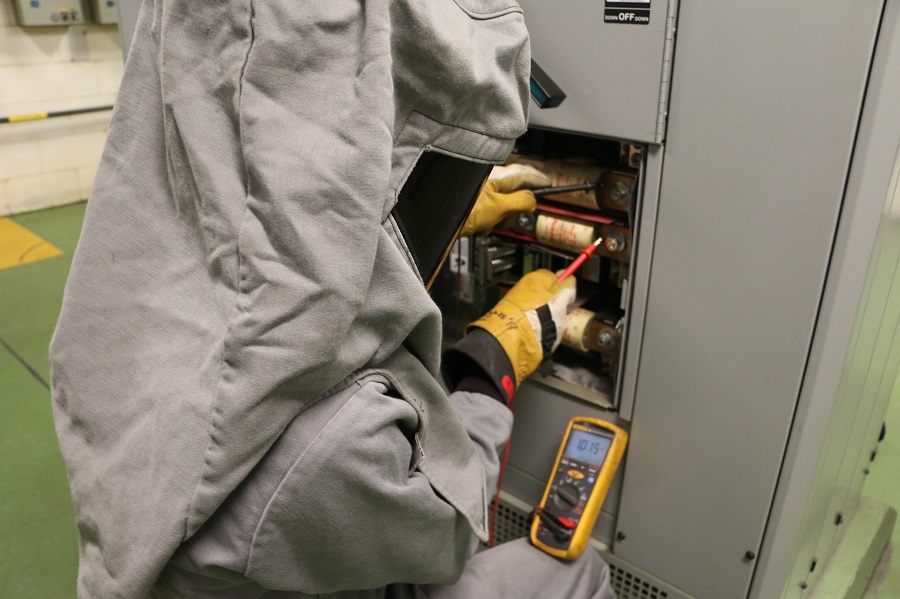Wearing arc rated clothing over the top of other arc rated clothing is commonly referred to as layering. Layering can be an effective way of increasing protection from arc flash hazards while providing a higher level of employee comfort. However, the layering of arc rated clothing can be tricky and if performed incorrectly it may actually reduce the level of safety provided by the equipment. Here are a few common mistakes that we have observed and a few tips to help keep you and your employees safe.
Common Mistakes and misconceptions
The arc ratings of the clothing layers cannot be added together to determine the total level of protection. Simply put, you cannot put on an 8 cal/cm2 coverall on over the top of an 8 cal/cm2 shirt and pants and think that you have achieved 16 cal/cm2 of protection. In the world of arc rated clothing 8+8 does not = 16. The clothing layers must be tested as a system to determine the actual level of protection. Consult with your PPE vendor before initiating an arc-rated clothing layering program. They will be able to tell you the actual value of your proposed layered system. Some manufacturers such as Bulwark offer calculators or charts which make it easier to determine the total system ATPV for their layered garments.
You must layer the entire body. If you layer the shirts to increase protection you must also increase protection for the legs. We often see workers who wear an undershirt with an ATPV of 8 cal/cm2 and put on an 8 cal/cm2 arc rated work shirt over the top but wear pants that have an arc rating of 8 cal/cm2. In this case, the total system value would be 8 cal/cm2 because even though the level of protection has increased for the upper body the level of protection for the lower extremities has not.
Outer layers such as jackets, raincoats, and high visibility vests must be arc rated. If your outerwear is not arc rated, it can ignite when exposed to an arc flash eliminating the protection provided by the arc rated clothing worn underneath. Check the label or consult the manufacturer to determine if the gear is arc rated. If in doubt, don’t use it. According to NFPA 70E table 1307.7(C)(14), Arc rated rainwear must meet ASTM F1891 standards.
Base layers or underwear (those next to your skin), must be a non-melting natural fiber such as 100% cotton. In the event of an arc flash heat will transfer through arc rated clothing and in some cases, enough heat could transfer through to melt some synthetic materials resulting in a burn injury. Never wear synthetic fabrics such as polyester, nylon, or spandex underneath your arc-rated clothing.
How to Stay Safe
We always recommend to our clients to consult with a reputable arc rated clothing manufacturer or vendor before purchasing arc rated clothing and other equipment. There is an immense amount of science and engineering that goes into every arc rated garment, consulting with an expert will ensure that your employees have a clothing program that will keep them safe as well as comfortable.
[activecampaign form=3]






